
细胞发现(英文)(Cell Discovery)(OA学术期刊)(国际刊号) 知网目次
- 高T2
- 主管单位:
- 主办单位:
中国科学院分子细胞科学卓越中心
- 国际刊号:
2056-5968;EISSN 2056-5968
- 国内刊号:
- 学科分类:
- 字数:
-
- 有无基金:
- 周期:
国际号刊-不定期
- 特殊属性:
外文期刊
- 电话:
- 邮箱:
cd@sibcb.ac.cn(官网邮箱)
- 复合因子:
0
- 综合因子:
0
- 收录:
知网目次
- 级别:
高T2
期刊简介
《细胞发现》期刊已被查看: 次
更新频次
单位占比
一作占比
投稿指南
1、该刊只有国际刊号。
2、投稿方式:在线投稿。
3、官网网址:https://www.nature.com/celldisc/
4、投稿网址:https://mts-celldisc.nature.com/
5、主办单位相关网址:http://cemcs.cas.cn/xhqk/
(中国科学院分子细胞科学卓越创新中心)
https://www.cscb.org.cn/journal.html
(中国细胞生物学学会)
6、官网邮箱:cd@sibcb.ac.cn
7、官网传真:021-54920952
8、出刊日期:不定期出版。
2022年1月13日星期四
《细胞发现(英文)》(Cell Discovery)
作者指南【官网信息】
Guide for Authors
Aims and Scope
Cell Discovery is a new fully open access international journal that publishes results of significance and originality in all areas of molecular & cell biology. Cell Discovery is established in 2015 as a sister journal of Cell Research , a high profile international journal.
Cell Discovery, published by Springer Nature in partnership with the Center for Excellence in Molecular Cell Science, Chinese Academy of Sciences (CAS), aims to provide an open access platform for scientists to publish their high quality works. The basic bar of acceptance is comparable to prestigious society journals in the respective field of the work.
The journal has an international authorship and a broad scope in basic life sciences, and is a valued member of Springer Nature’s highly respected family of Molecular Cell Biology journals.
Journal Details
Editor Emeritus:
Gang Pei
Editor-in-Chief:
Dangsheng Li
Center for Excellence in Molecular Cell Science, Chinese Academy Science (CAS)
Editorial office:
Center for Excellence in Molecular Cell Science, Chinese Academy of Sciences,
31B 401 R, 319 Yueyang Road, Shanghai, 200031, China
Email: cd@sibcb.ac.cn
Fax: +86-021-54920952
ARTICLE TYPES
Article Description Abstract Word Limit Tables/ Figures References guideline
Article
A complete, comprehensive report of original research. An Article usually has a fairly complex narrative that is based on multiple techniques and/or approaches.
Unstructured abstract; max word limit: 250
6,000 – 8,000 words excluding abstract, references, figures and tables
Max of 8
Max of 100.
Please use as current as possible.
Correspondence
Correspondence provides rapid and concise report of a novel finding that is brief in nature but is of general interest to the field. There should be no more than 10 authors.
None
1,200 words excluding, references, figures and tables
Max of 1
Max of 10,
Editorial
The editors invite editorials to discuss a topical issue or a paper published in the journal and set the problems addressed by the paper in the wider context of the field. These are usually commissioned, but unsolicited editorial submissions are considered for publication.
None
1,000 words excluding references
Max of 1
Max of 10
Review Article A comprehensive synthesis and/or analysis of specific topics. A short Introduction giving the rationale for the review should be followed by
Unstructured abstract; max word limit: 250
15,000 words max excluding abstract, references,
Max of 8
Max of 250
Guide for Authors
Revised July 12th, 2021 www.nature.com/celldisc 2
sections with appropriate subheadings, followed by a conclusions section at the end. The standard footer headings (Acknowledgements, Contributions, Competing Interests, Funding) are required. All invited reviews will undergo peer review prior to acceptance.
figures and tables
Word limit
Word limits are provided for guidance only. The Editors will consider submissions that exceed the recommended limit, subject to feedback received during peer review. PREPARATION OF ARTICLES
Please note that Articles must contain the following components in the order stated. Please see below for further details.
Title page
Abstract
Introduction
Results
Discussion
Materials and methods
Acknowledgements
Conflict of interests
Contributions
References
Figure legends
Tables
Figures
Article Requirements
Cover letter
Each manuscript must be accompanied by a cover letter including statements that:
Highlight of the current manuscript should be limited to no more than 2 short sentences;
All authors agree with the submission;
The work has not been published or submitted for publication elsewhere, either completely or in part, or in another form or language;
If material has been reproduced from another source, the authors have authorization from the copyright holder (usually the Publisher) to use it, and have included this authorization with their submission;
Conflict of Interest Statement
Organization of manuscript
All textual content should be provided in a single file, prepared using either Microsoft Word or TeX/LaTeX; figures should be provided in individual files. The manuscript text file should include the following parts, in order: a title page with author affiliations and contact information (the corresponding author should be identified with an asterisk); the sections required for each content type (see information for different content types) then References, Acknowledgements (optional), Author Contributions (Articles only), Competing Financial Interests statement, Figure Legends and Tables. Footnotes to the text are not allowed and any such material should be incorporated into the text as parenthetical matter.
(i) Title page
The title page should include a succinct title (less than 200 characters); a concise running title (which should normally not exceed 50 characters); the full names of all authors including their given names; the affiliations (including city, state, country and zip code) of all authors; the official email addresses of all authors, and the full contact details of the corresponding author (including telephone and fax numbers).
(ii) Abstract
A brief abstract (maximum 250 words) should state the purpose, basic procedures, main findings and principal conclusions of the study. The abstract should not contain abbreviations or references and should not be structured.
(iii) Introduction
The Introduction should summarize the rationale for the study and outline pertinent background material. The Introduction should not contain either results or conclusions.
(iv) Results
The Results should be presented in a logical sequence in the text, tables and figures; repetitive presentation of the same data in different forms should be avoided. The Results should not include material appropriate to the Discussion.
(v) Discussion
The Discussion should not reiterate Results, but rather should consider them in relation to any hypotheses advanced in the Introduction. This may include an evaluation of methodology and the relationship of new information to the existing body of knowledge in that field.
(vi) Materials and methods
Materials and Methods should be described in sufficient detail to allow the experimental work to be reproduced in another laboratory, and to leave the reader in no doubt as to how the results were derived.
Availability of data, materials and methods: An inherent principle of publication is that others should be able to replicate and build upon the authors' published claims. A
Revised July 12th, 2021 www.nature.com/celldisc 3
condition of publication is that authors are required to make materials, data, code, and associated protocols promptly available to readers without undue qualifications.
Submission of a manuscript to Cell Discovery implies that materials described in the manuscript, including all relevant raw data, will be freely available to any scientist wishing to use them for non-commercial purposes, without breaching participant confidentiality.
Data availability statements: Data availability statements provide a statement about where data supporting the results reported in a published article can be found - including, where applicable, hyperlinks to publicly archived datasets analysed or generated during the study. For all original research articles, we require the provision of data availability statements, examples and details can be seen on our data policy web page. The statement should be placed at the end of the Methods section (titled, ‘Data availability’), after the code availability statement if one is present. For further guidance, please refer to the Data availability and data citations policy information and Frequently Asked Questions (FAQs).
Cell Discovery strongly encourages that all datasets on which the conclusions of the paper rely should be available to readers. We encourage authors to ensure that their datasets are either deposited in publicly available repositories (where available and appropriate) or presented in the main manuscript or additional supporting files whenever possible. Please see Springer Nature’s information on recommended repositories. General repositories - for all types of research data - such as figshare and Dryad may be used where appropriate.
Where a widely established research community expectation for data archiving in public repositories exists, submission to a community-endorsed, public repository is mandatory. Persistent identifiers (such as DOIs and accession numbers) for relevant datasets must be provided in the paper.
……
更多详情:
https://www.nature.com/documents/celldisc-gta.pdf
上一篇:涉外法治研究(集刊)下一篇:计算物理通讯(英文)(Communications in Computational Physics)(国际刊号)
《细胞发现》同类生物科学期刊
-
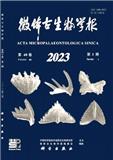
微体古生物学报
北核,CSCD,科核,高T2
CN中文-季刊影响因子0.718
-
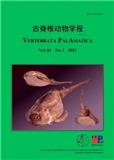
古脊椎动物学报(中英文)
北核,CSCD,科核,高T1
CN中文-季刊影响因子0.7
-

植物科学学报(原:武汉植物学研究)
北核,CSCD,科核,武A-
CN中文-双月刊影响因子1.589
-
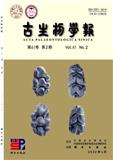
古生物学报
北核,CSCD,科核,高T1,武B+
CN中文-季刊影响因子0.83
-
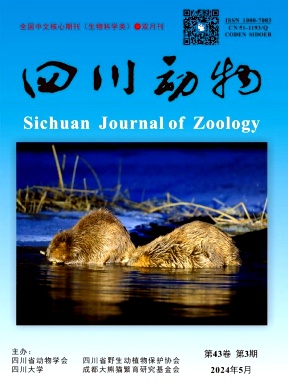
四川动物
北核,科核
CN中文-双月刊影响因子1.24
-
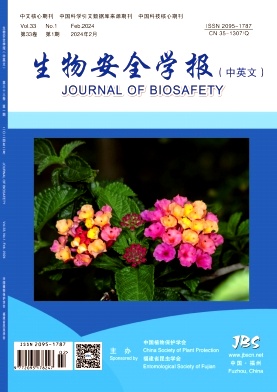
生物安全学报(中英文)(原:华东昆虫学报)
北核,科核,CSCD扩
CN中文-季刊影响因子1.247
-
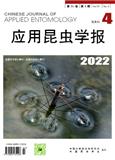
应用昆虫学报(原:昆虫知识)
北核,CSCD,科核,武A
CN中文-双月刊影响因子1.836
-
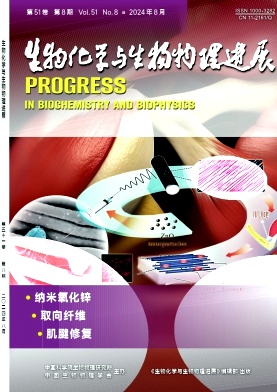
生物化学与生物物理进展
北核,CSCD,科核,武A-
CN中文-月刊影响因子1.167
常见问题
-
细胞发现杂志社官网、联系方式是什么?
细胞发现杂志社官网:https://www.nature.com/celldisc/
投稿网址:https://mts-celldisc.nature.com/
投稿邮箱:cd@sibcb.ac.cn(官网邮箱) -
细胞发现杂志是核心期刊么?
细胞发现不是核心期刊,级别是:高T2, 是:生物科学分类下的知网目次收录的期刊。
-
请问你们是细胞发现杂志社吗?
我们不是《细胞发现》杂志社。本站主要从事期刊信息展示与期刊推荐,不是任何杂志官网,直投稿件请联系杂志社。本站仅提供免费的学术指导、论文辅导、期刊投稿信息整理收集服务。
-
你们指导服务后可以保证文章被发表吗?
期刊发表的成功与否,主要取决于文章内容的质量。编辑老师会根据研究领域、创新性等多因素进行考量。我们会帮助您理解期刊的发表要求,助力提升发表几率,从而增加发表的机会。
-
晋级论文能否在报纸上发表?
在学术界,论文的发表往往被视为研究者职业发展的重要一环。晋级论文,即为了获得更高职称或学术地位而撰写的学术论文,通常需在专业期刊上发表。然而,许多人可能会问
